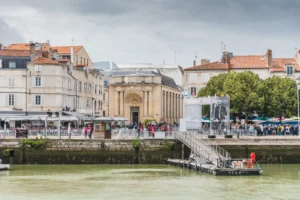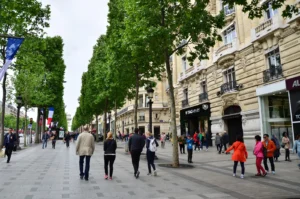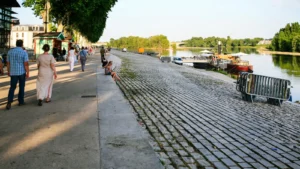A French chateau wedding offers more than just a breathtaking backdrop—it invites you into a living chapter of European history. Rooted in France’s noble past, these grand estates combine timeless architecture, manicured gardens, and sweeping countryside views to create a setting of unmatched elegance and cultural depth.
For couples seeking a wedding location that balances heritage with refinement, French châteaux stand apart. Each estate carries its own story, setting the stage for personal and timeless ceremonies. From intimate affairs to lavish gatherings, these venues offer more than beauty—they offer a sense of permanence and purpose that elevates the entire experience.
This article explores what makes a château wedding in France truly unforgettable. From selecting the right property to crafting a guest experience rooted in charm and sophistication, every detail counts toward making this once-in-a-lifetime occasion as it should be—extraordinary.
The Timeless Appeal of a French Chateau Wedding
French châteaux aren’t just visually impressive—they have deep roots in the culture, design, and traditions of the regions they belong to. For couples planning a French chateau wedding, these estates offer a setting that blends authenticity with refinement.
Their age isn’t a novelty—it’s a strength. These properties have hosted generations of gatherings, and their walls reflect that continuity. Whether a medieval stone keep or a Renaissance-era manor, each château reveals how time shapes beauty.
Unlike modern venues built for function, châteaux were designed with beauty and detail in mind. Their architectural features—high ceilings, arched windows, hand-painted interiors—create a sense of romance that doesn’t need to be manufactured. Couples become part of a larger historical narrative, making their French chateau wedding more than a single event—it becomes part of a legacy.
One of the most unique aspects of a château wedding is how it balances scale with intimacy. The spaces are expansive—perfect for multi-day celebrations—yet the layout remains personal. Smaller salons, terraces, and garden alcoves invite quiet moments between the bigger events.
This balance creates a rhythm that’s hard to replicate elsewhere. Guests can gather for shared meals, explore the grounds at their own pace, or relax in grand and familiar spaces. It’s not about overwhelming scale—it’s about setting the right tone across every part of the weekend.
Regional Charm for Your French Chateau Wedding
Each region of France offers a unique version of the château experience. From the architecture to the setting, the feel of the event shifts depending on where it takes place.
Loire Valley
Known as the heart of French château culture, the Loire Valley is home to some of the country’s most iconic estates. These properties are surrounded by vineyards, forests, and rivers, offering a fairy-tale setting with plenty of opportunities for wine tastings, historical tours, and outdoor ceremonies.
Provence
In the South of France, Provence delivers sun-soaked views, warm-colored stonework, and a more rustic elegance. Châteaux in this region often sit among lavender fields, olive groves, and winding hills, providing a dreamy backdrop for relaxed yet refined celebrations.
Dordogne
Dordogne offers a more understated alternative for those seeking quiet charm and natural beauty. Its medieval châteaux are often surrounded by woodlands and rolling countryside, ideal for couples wanting a peaceful setting with deep historical roots. For inspiration on local highlights, explore what to see in Dordogne France—from castles and markets to riverside villages.
Château de Lasfonds, located on the border of Dordogne and Charente, reflects this quiet elegance. Though deeply rural, it offers direct access to Bordeaux, Paris, and historic towns across Nouvelle-Aquitaine, making it both secluded and practical for guests traveling from afar.
For more inspiration beyond the typical destinations, explore What to Do in France—a curated guide to the country’s hidden gems and unforgettable experiences beyond Paris.
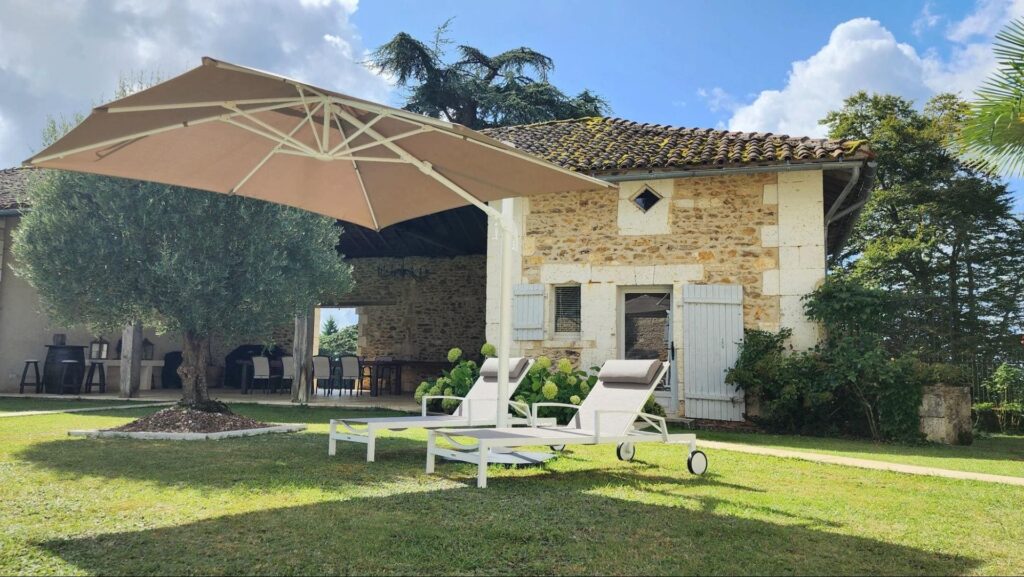
Photo at Château de Lasfonds. Garden lounge area for a French chateau wedding.
A Setting That Shapes the Experience
French châteaux support a natural flow for multi-day events. The setting itself encourages a deeper connection between guests and the place. The atmosphere feels relaxed and immersive, making it easier for couples to enjoy every moment without feeling rushed. In this way, the venue shapes how the wedding looks and feels.
The appeal of a château wedding lies in its ability to combine heritage easily. It’s a place where elegance isn’t staged—it’s built into the walls, the views, and the details. And for many couples, that turns a beautiful wedding into an unforgettable memory.
Why Choose a Château for Your Wedding?
A wedding is more than a ceremony. It reflects values, style, and the memories a couple wants to share with their guests. Choosing a French château as the venue isn’t simply about beauty but creating a complete experience. From convenience to atmosphere, there are several reasons why couples choose these estates as the setting for their most important day.
A French Chateau Wedding Venue That Tells a Story
Unlike typical event spaces, a French chateau wedding venue offers history, charm, and identity. These estates are rich with details that spark emotion—a sweeping staircase, a rose-lined courtyard, or a centuries-old chapel hidden within the grounds. Every château tells a story, and your wedding becomes a meaningful part of it.
The connection between the place and the celebration adds meaning. Instead of a rented space designed to look romantic, couples celebrate in a location with depth and character. That authenticity creates an atmosphere that guests feel the moment they arrive.
A French Chateau Wedding: All-in-One Location for Multi-Day Celebrations
Many châteaux offer everything for a wedding weekend:
- Event spaces
- Guest accommodations
- Dining areas
- Lounges, and
- Landscaped gardens.
This allows for seamless transitions between different parts of the celebration—welcome cocktails, the ceremony, dinner, dancing, and farewell brunches can all take place on-site.
Guests don’t need to worry about transportation or navigating unfamiliar areas. Everything happens in one location, giving the event a natural rhythm and a sense of ease.
Privacy and Exclusivity at Your French Chateau Wedding
A château wedding provides privacy that other venues can’t match. Most are located on large estates, away from busy cities or shared hotel spaces. Couples and their guests can enjoy the celebration without outside interruptions or the presence of unrelated visitors.
This exclusivity makes the event feel more personal. For a few days, the château becomes a private world, where every moment is centered around the couple and their closest people.
A French Chateau Wedding: A Memorable Experience for Guests
Guests remember weddings that feel different, immersive, and thoughtful. A château delivers that. Whether guests have breakfast in the courtyard, dance under chandeliers, or gather around a fire in the evening, the setting invites them to slow down and enjoy each part of the celebration.
The venue’s beauty also creates natural photo opportunities throughout the day. Every corner offers a new backdrop—from garden pathways to ornate staircases—ensuring the wedding album feels as rich as the event.
Savoring French Cuisine and Wine at a Château Wedding
Photo at Château de Lasfonds. Breakfast table setting for a French chateau wedding.
Many château owners work with experienced wedding planners and hospitality teams specializing in high-end events. From menu design to décor, the level of service is typically elevated, focusing on creating custom experiences that reflect each couple’s vision.
Dining at a French château wedding isn’t just a formality—it’s a highlight. Menus often reflect the local region, featuring seasonal ingredients like duck confit, truffles, or Cognac-glazed dishes, depending on the area. Whether served in a vaulted dining room or outdoors under string lights, the meal becomes part of the celebration’s rhythm.
Wine selections typically draw from nearby vineyards—Bordeaux, Saint-Émilion, or hidden regional estates—and are curated to match the meal’s tone and flavor. Some couples host wine tastings or invite local sommeliers to guide the experience.
At estates like Château de Lasfonds, guests may opt for private chefs or cooking classes, making dining interactive and memorable. Food and wine here aren’t background details—they’re a grounded, sensory reflection of place and time.
Selecting the Perfect French Château for Your Wedding

Photo at Château de Lasfonds
Choosing a château isn’t simply about picking a beautiful backdrop. It’s about aligning the venue with the celebration’s vision, rhythm, and logistics. The right château complements the couple’s priorities, supports a multi-day experience, and removes friction from planning. Getting this decision right is critical, not just aesthetically, but practically and emotionally.
Define the Type of Experience First
Before browsing estates, couples should define what they want the wedding to feel like. Is the goal a formal black-tie affair? A weekend-long retreat with close friends and family? A celebration that blends cultural traditions?
Different châteaux suit different styles. A fully-staffed luxury château may be ideal for a hands-off couple prioritizing elegance and service. A remote, rental-only property may better suit those seeking privacy, creative freedom, and a more hands-on approach. The level of customization, formality, and flow desired should guide every subsequent decision.
Match the Venue to the Season and Guest Dynamics
France has distinct regional climates, and seasons can impact everything from ceremony timing to guest comfort. A château in Provence offers warm, dry evenings in late spring, perfect for al fresco dinners and lavender fields in bloom. In contrast, regions like Normandy and the Loire Valley may require contingency planning for unpredictable weather.
The guest list also influences the château selection. For example:
- An extensive international guest list may call for a château near a major airport or train hub (Avignon, Tours, Paris, Nice).
- If many guests are elderly or traveling with children, proximity to hotels and medical facilities should be factored in.
- For full-weekend weddings, châteaux with on-site or nearby accommodations prevent logistical headaches and reduce transport costs.
Evaluate the Venue’s Infrastructure—Not Just Its Beauty
A château can look stunning in photos and still be impractical for a modern event. Many are heritage-listed, which means preservation laws limit renovations. That can affect:
- Power supply: Is it strong enough to simultaneously support lighting, sound systems, and catering equipment?
- Restrooms: Are there enough for the guest count, and are they close to the main event space?
- Kitchen facilities: Is there a commercial kitchen, or must caterers bring mobile units?
- Climate control: Are the interiors heated or cooled, especially for shoulder-season weddings?
Understanding the physical layout is essential. Some châteaux require guests to move between spaces using stairs, cobblestone paths, or gravel drives—not always ideal for formal wear or accessibility needs. Site maps and floor plans can reveal friction points early in the process.
Understand the Owner’s Model: Venue-Only vs. Full-Service
Photo at Château de Lasfonds. Garden dining terrace for a French chateau wedding.
Châteaux operate under various business models. Some offer only the venue—a “blank canvas” ideal for planners who want complete creative control. Others offer all-inclusive packages with catering, coordination, staff, and floral design.
Venue-only rentals require careful planning and supplier coordination. However, they often allow more flexibility in vendors, cultural customs, dietary needs, and budget allocation. Full-service venues streamline the process and are valuable when time, language, or distance are limiting factors.
It’s also important to ask:
- What is the check-in/check-out time for guests?
- Are there exclusive-use guarantees, or will other events take place nearby?
- Does the château work with a preferred vendor list, and if so, how flexible is it?
Some properties require using their in-house caterer or event team, which may restrict creative choices. Others offer open vendor policies but expect the client to handle all logistics independently.
Be Strategic with the Booking Timeline
Château calendars fill quickly—especially those within two hours of Paris or in Provence during peak season (May–September). Popular properties can be booked 12–18 months in advance, particularly for weekend dates.
Some couples secure the venue before hiring a planner; others bring one in early to guide the search and manage communication. If planners have established relationships with venue owners, they can often arrange private tours, negotiate favorable terms, and anticipate issues that don’t appear in brochures or listings.
Booking outside peak season (October to April) opens up high-end venues at more accessible rates. Off-season weddings can also create a more relaxed experience for guests and vendors, with increased availability and less scheduling pressure.
Don’t Skip the Legal Fine Print
It’s easy to get swept away by images and floor plans, but every château contract should be reviewed carefully. Key elements to clarify:
- Insurance: Is liability coverage included or required separately?
- Noise curfews: Many rural areas enforce sound restrictions after a particular hour, which could affect the reception timeline.
- Setup/teardown windows: How many hours are vendor access allowed before and after the event?
- Security deposits and damage clauses: Historic buildings often have higher financial risks if any property is damaged.
If the couple is non-French, it’s strongly recommended that contracts be reviewed by a bilingual planner or legal advisor familiar with French event law. Misunderstandings around access hours, equipment limits, or refund policies can derail the experience.
Budgeting for a French Chateau Wedding
Photo at Château de Lasfonds. Estate overview for a French chateau wedding.
French château weddings vary widely in cost, typically starting from €10,000 for venue rental and climbing based on location, size, and included services. Full-weekend packages with on-site accommodation and staffing may exceed €30,000, but simplify logistics.
Key expenses include catering (€120–€250 per guest), planning services (10–15% of the total budget), rentals, and technical setup. Rural locations often require sound equipment, lighting, and additional furniture.
To manage costs, couples book during shoulder seasons (April, October), choose mid-week dates, or limit guest numbers. Working with local vendors—especially caterers and florists—reduces travel fees and streamlines coordination. Prioritizing the guest experience while trimming excess ensures the wedding stays elegant and financially sustainable.
What Guests Need to Know Before Attending a French Chateau Wedding
Attending a château wedding in France is a memorable experience but requires thoughtful preparation. Since many events span multiple days and occur in rural settings, guests should be well-informed to enjoy the occasion fully.
While the wedding may be formal, many château weddings include relaxed outdoor gatherings, wine tastings, or countryside walks. Guests should pack both formal and casual attire, along with practical items like:
- Comfortable shoes for uneven terrain
- A light jacket for cooler evenings
- Travel adapters and chargers
- Sunscreen and insect repellent for summer events
If the château includes a pool or spa, swimwear is worth bringing.
Understanding the Flow of Events
Multi-day château weddings often begin with a welcome dinner, followed by the wedding day and a brunch or farewell event. Guests should check the full itinerary and RSVP to each segment if required. Transportation and accommodation details may be arranged beforehand, so confirming these logistics early ensures a smooth experience.
Guests unfamiliar with French customs should also expect a longer dining experience and a less rigid schedule than many American or UK weddings. Embracing the pace is part of what makes a château wedding feel like a retreat rather than a formal one-day event.
Designing and Styling a Château Wedding
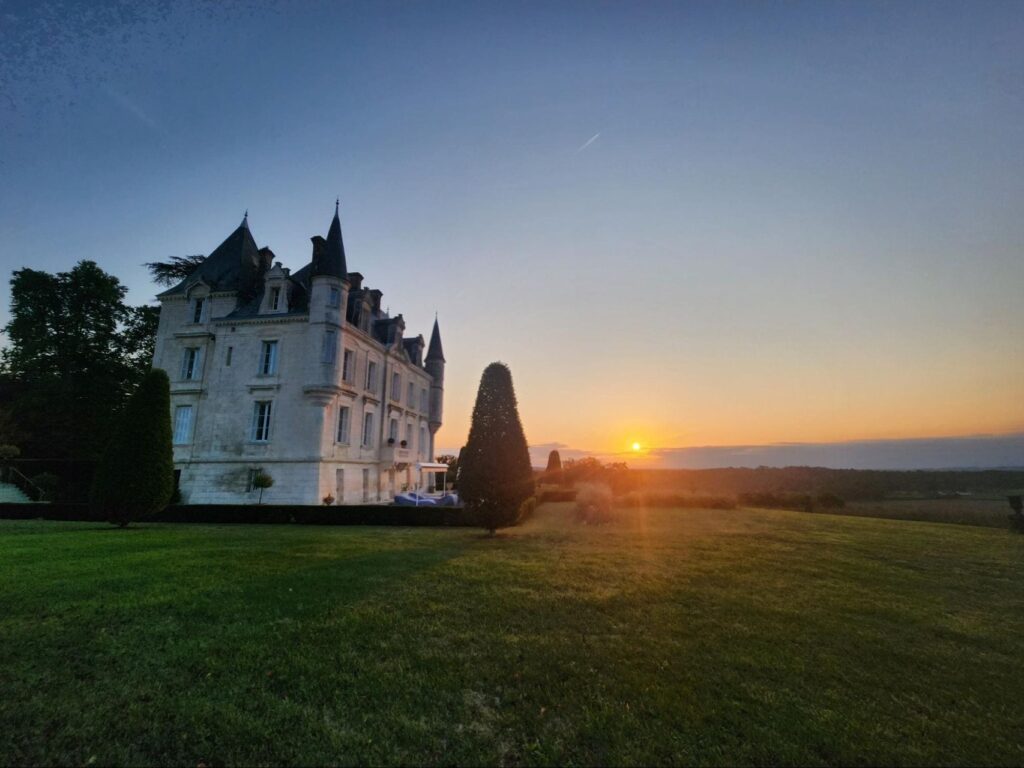
Photo at Château de Lasfonds. Sunset backdrop for a French chateau wedding.
Château weddings stand apart because the venue itself sets the tone. The experience doesn’t rely on heavy decoration or rigid schedules. Instead, it’s shaped through subtle details, thoughtful styling, and respect for the space.
Let the Venue Lead the Design
Each château has its own visual identity—aged stone, vintage ironwork, antique furniture, or sculpted gardens. Styling should work with those details, not cover them.
Neutral color palettes—like soft ivory, muted greens, or warm blush—complement historic interiors without clashing. Stronger colors can be added through flowers, napkins, or stationery, but balance is key. The goal is to highlight the setting, not distract from it.
Florals should feel natural in scale and style. Overgrown arrangements suit countryside estates, while more tailored pieces work in classic salons. Designers familiar with historic venues understand how to use freestanding structures, especially in spaces where hanging décor isn’t allowed.
Build the Atmosphere Through Small, Intentional Choices
Decor isn’t the only element shaping the guest experience. Lighting changes everything—candlelight for dinner tables, soft string lights outdoors, or uplighting that enhances the château’s stone textures. These choices affect mood without overwhelming the environment.
Table settings should reflect quality over excess. Linen runners, hand-tied menus, and mixed materials—like ceramics, brass, or glass—create layers of interest that feel elegant without being overdesigned.
Sound also plays a role. A string trio in the garden or a pianist in the salon creates atmosphere between significant moments. These touches feel immersive without requiring large setups or performances.
Design with Flow in Mind
A château wedding typically moves between indoor and outdoor spaces. Design should support that flow—clear pathways, places to pause, and transitions that feel natural. Every element, from signage to seating, should help guests move through the day without confusion.
When styling supports the setting, the wedding feels intentional, effortless, and unforgettable.
Why Château de Lasfonds Is Ideal for Intimate Events and Slow Gatherings
Photo at Château de Lasfonds. Grand exterior ideal for a French chateau wedding.
Tucked between the rolling countryside of Charente and Dordogne, Château de Lasfonds offers something rare—a slower, more personal way to gather, celebrate, and stay. While the estate is not hosting weddings during the 2025–2026 season, it remains a remarkable option for intimate events and week-long escapes. If you’re looking to rent a castle in France that combines history, comfort, and privacy, Lasfonds is an ideal choice.
A Full-Estate Experience for Up to 18 Guests
At Lasfonds, there are no partial bookings or shared rentals. The entire 6.5-hectare estate—main château, gardens, pool, and outbuildings—is reserved exclusively for your group. Whether it’s two people or eighteen, guests have full access for a minimum stay of one week, allowing time to settle in and connect without the pressure of quick timelines.
The layout includes the main château, with salons, a vaulted dining room, themed bedrooms, and guest-ready gîtes like the Lavender Cottage and Pool Gîte. From art-filled lounges to a high-end entertainment suite with PS5 and VR, every detail supports comfort without excess.
Historic Charm with Modern Comfort
Jacques Luce Lucien Janet de Lasfonds originally developed Château de Lasfonds in the 1850s. Recent restorations, completed in 2023, preserved its original character while adding modern essentials—air conditioning, ensuite bedrooms, multiple kitchens, and high-speed connectivity.
The interiors reflect a mix of heritage and global design: European and Asian antiques, modern artworks, vaulted timber ceilings, and period furniture. Outside, the estate’s natural setting brings wildlife, walking paths, and clear skies perfect for stargazing.
Grounded in the Region, Accessible from Anywhere
Though quiet and tucked away, Lasfonds is easy to reach. Angoulême station is 35 minutes away by car, with direct high-speed train connections to Paris. Bordeaux, Cognac, and Brantôme are nearby for day trips. Bergerac and Limoges airports offer regional access, while Cognac’s private airfield is under an hour away.
Whether celebrating a family anniversary, gathering for a creative retreat, or simply stepping back, Château de Lasfonds offers space, stillness, and a setting that holds its own—no amplification needed.
How to Book Your Stay at Château de Lasfonds for a French Chateau Wedding
Photo at Château de Lasfonds. Elegant hallway for a French chateau wedding.
Planning your stay at Château de Lasfonds is a simple, personalized process to ensure comfort.
Step 1: Check Availability
Send an email with your preferred dates and guest count. You’ll receive a short questionnaire and an invitation to schedule a call to discuss your plans in more detail.
Step 2: Confirm Your Reservation
After the call, a detailed proposal and payment instructions will be shared for review and signature. Once confirmed, the team can connect you with a concierge partner for optional planning support.
Step 3: Final Prep
You’ll receive a confirmation check-in message a few days before arrival to ensure everything is in place.
Please visit Chateau de Lasfonds for more booking details and follow the instructions.
French Chateau Wedding – Frequently Asked Questions (FAQs)
A château wedding is a celebration hosted at a historic French estate—typically a castle or manor surrounded by gardens and countryside. These venues offer a combination of elegance, history, and privacy, making them ideal for multi-day gatherings.
Weddings at châteaux are known for their immersive atmosphere, scenic settings, and balance of formality and personal touch.
Costs vary widely depending on the region, season, guest count, and level of service. Venue-only rentals may start around €10,000, while full-weekend packages with accommodations and staffing can exceed €30,000.
Catering, planning, rentals, and transportation add to the total. Booking in shoulder seasons and working with local vendors helps manage the budget. Château de Lasfonds, for example, offers full-estate stays with a clear weekly rate based on season and group size.
Château weddings often include both formal events and casual gatherings. Guests should bring semi-formal attire for welcome dinners, formalwear for the ceremony, and comfortable clothing for daytime activities.
Practical items like flats for garden paths, shawls for cooler evenings, and sun protection for outdoor events are also recommended, especially in rural, open-air settings.
While it’s not mandatory, hiring a local wedding planner can be highly beneficial. They have experience with Chateau weddings, can help navigate local customs and regulations, and coordinate logistics to ensure everything runs smoothly on your big day.
To book your stay at Chateau de Lasfonds for your wedding or event, visit the official website of Chateau de Lasfonds and follow the booking instructions provided. Whether you’re planning a French Chateau wedding or a romantic getaway, our team will assist you in securing your reservation.
Absolutely! Chateau de Lasfonds is a perfect venue for Chateau weddings, corporate retreats, and other special events. The tranquil setting and elegant indoor and outdoor spaces make it ideal for professional gatherings and romantic celebrations.
For couples planning a French Chateau wedding, Chateau de Lasfonds provides luxurious accommodations for wedding guests, including king-sized beds, en-suite bathrooms, and breathtaking views, ensuring comfort throughout the stay.
Yes! Guests attending a wedding at the Chateau can enjoy spa services, fitness facilities, and outdoor yoga sessions, perfect for unwinding before or after the wedding festivities.
Chateau de Lasfonds is an ideal venue for Chateau weddings, family reunions, corporate retreats, and milestone celebrations. Whether a grand French Chateau wedding or an intimate ceremony, the venue offers a magical setting for every special occasion.
Yes, but travel planning matters. Many châteaux are in the countryside, so access often involves a train ride from Paris or Bordeaux followed by a car transfer. Couples typically provide travel tips or arrange group transportation. Guests should book flights and accommodations early, especially during high season, to ensure availability and a smooth arrival.
Legally marrying in France as a non-resident is complex and usually requires a minimum residency period. For this reason, most couples opt for a civil ceremony in their home country, followed by a symbolic or religious ceremony at the château. This allows complete planning flexibility while creating a meaningful, culturally rich celebration.
French castles, such as Chateau de Lasfonds, provide a unique blend of historical charm, luxury, and modern amenities. They allow guests to experience the tranquility of the countryside while enjoying sophisticated comforts.
Yes, a wedding at the Chateau de Lasfonds is an exceptional choice. The venue features beautiful gardens and elegant indoor spaces for ceremonies and receptions, making it perfect for intimate and grand celebrations.

